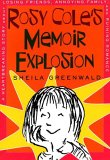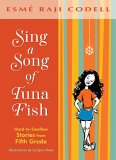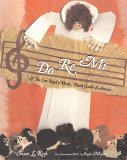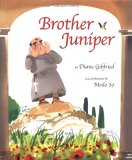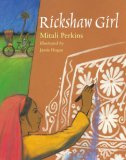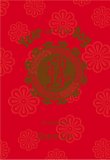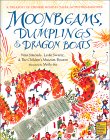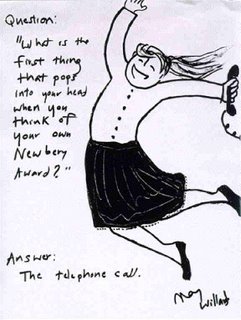 So, the big American Library Association (ALA) Awards have been announced,and an integral part of winning the Newbery or Caldecott is getting "the call," a rrrring-rrrring that is described at the acceptance speeches of such awards and echo through the annals of time and back issues of The Horn Book Magazine. Sigh! This time of year is always a very tiring one for me, with all the journalists on my front lawn, lounging about and waiting to badger me with the same old question, "So, Esme, what's it like not to receive the call?" Let me say, for public record, it is a wee bit like:
So, the big American Library Association (ALA) Awards have been announced,and an integral part of winning the Newbery or Caldecott is getting "the call," a rrrring-rrrring that is described at the acceptance speeches of such awards and echo through the annals of time and back issues of The Horn Book Magazine. Sigh! This time of year is always a very tiring one for me, with all the journalists on my front lawn, lounging about and waiting to badger me with the same old question, "So, Esme, what's it like not to receive the call?" Let me say, for public record, it is a wee bit like:Being the mother of a daughter that gets stood up for prom;
Being Pandora and watching all of the vices of the box flying out, taking Hope along as hostage;
Being like the beautiful and talented Lana Turner, who was sitting at the counter of Schwab's drugstore soda fountain on Sunset Boulevard when she was discovered, only unlike Lana Turner you don't get discovered and you reach the bottom of that soda and you sip at it until it makes that horrible sound through the straw and there's nothing left but the phlegmmy foam and there really is just no choice but to order another damn soda.
But, no biggie. They say, that which does not kill us makes us stronger, or at least prepares us for the inevitable, so win-win! Personally, I can understand why The Today Show, which hosts the winners the morning after, does not want me on their program! I would have wasted all that valuable air time inquiring why women journalists on morning news programs seem to have such an awfully hard time pronouncing the letter "g" at the end of words! ("We're see-een a lot of fighteen in Iraq," "This team seems to be winneen," "What are you goeen to do, with all these mortgage rates rye-seen?") So please! I'm no whiner! There is a master plan at work! I'm not complaineen! Nothing like a good ol'-fashioned chance for spiritual growth! How fortifyeen and invigorateen! How stimulateen!
 If I may put my unfortunate Gen-X seizure aside and be sincere for a moment, my favorite part of Newbery and Caldecott season is a side effect that happens prior to announcement day: the mock awards. This is the aspect that, to my mind, actually accomplishes what librarians, booksellers, bloggers and booklovers set out to do: get people reading and discussing books, celebrating the inroads, risk-taking and general delights of the year. Mostly held through public libraries, any potentially enthusiastic reader is a qualified judge, which is more authentic to what writers envision when they consider their audience. Children are often included in mock committees, which offers up the amazing facet of the intended audience directly participating. I love the mock lists, which are longer than the final lists of ALA winners, and offer a broader range for varying tastes; again, more authentic to the actual experience of choosing a book. I love the discussions, which, thanks to the internet, are increasingly inviting, inclusive and informative. The actual ALA awards, to an outside observer, can seem mysterious, clandestine and mathematical. As one who shed actual bitter tears when Jeanne DuPrau's CITY OF EMBER did not even receive a nod in its year, I was left to wonder, did it really even get its due behind those closed doors? Was the real, long-standing market for these award winners, the classroom, deeply considered? Who slept with whom, or could more whom-sleeping have somehow helped? There's no real way of knowing. With the mock awards, not only can we be certain if our favorites are being read, we can lobby. I often wish at least one of the ALA honors would go to the collective winner of the mock awards, not only for the self-serving reason of having a snowball's chance in, uh, Texas, but also because then the award would in some small part represent participation by the library patron as well as the librarian.
If I may put my unfortunate Gen-X seizure aside and be sincere for a moment, my favorite part of Newbery and Caldecott season is a side effect that happens prior to announcement day: the mock awards. This is the aspect that, to my mind, actually accomplishes what librarians, booksellers, bloggers and booklovers set out to do: get people reading and discussing books, celebrating the inroads, risk-taking and general delights of the year. Mostly held through public libraries, any potentially enthusiastic reader is a qualified judge, which is more authentic to what writers envision when they consider their audience. Children are often included in mock committees, which offers up the amazing facet of the intended audience directly participating. I love the mock lists, which are longer than the final lists of ALA winners, and offer a broader range for varying tastes; again, more authentic to the actual experience of choosing a book. I love the discussions, which, thanks to the internet, are increasingly inviting, inclusive and informative. The actual ALA awards, to an outside observer, can seem mysterious, clandestine and mathematical. As one who shed actual bitter tears when Jeanne DuPrau's CITY OF EMBER did not even receive a nod in its year, I was left to wonder, did it really even get its due behind those closed doors? Was the real, long-standing market for these award winners, the classroom, deeply considered? Who slept with whom, or could more whom-sleeping have somehow helped? There's no real way of knowing. With the mock awards, not only can we be certain if our favorites are being read, we can lobby. I often wish at least one of the ALA honors would go to the collective winner of the mock awards, not only for the self-serving reason of having a snowball's chance in, uh, Texas, but also because then the award would in some small part represent participation by the library patron as well as the librarian.
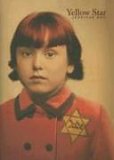
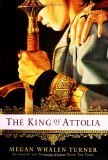 Luckily, in the case of CITY OF EMBER, the book still found its audience. But the announcement of the awards is indeed, for many quiet and wonderful and underpublicized books, so poignant. Though any published author is very fortunate and with many blessings to count, I still imagine disappointment. With the announcement of the awards to the deserving few, I mourned for the deserving many who got buzz only to be stung. Thinking of the good-natured and talented spirits behind A DROWNED MAIDEN'S HAIR, of YELLOW STAR, of THE KING OF ATTOLIA, with so many rallying cries for their acknowledgement, how could we not have hoped against hope for the big stickers? There are simply not enough to go around. I don't know exactly what I think of an award that can reduce a perfectly strong and talented modern person (certainly not me, but perhaps others, mind you), to some sad Sandra Dee, sitting by the phone (or doing something else so it doesn't seem like sitting by the phone). It's enough to make a person go into some nice, award-free occupation, like painting. Or waitressing. Or selling things on Ebay. Or jumping out of cakes. Or being a sherpa. Things. Things, maybe, suggested in the help wanted ads on Craigslist. I repeat: per usual, I am thinking and caring about others. I absoultely did not go out and buy WHAT COLOR IS YOUR PARACHUTE. After all, there are many copies in the public library.
Luckily, in the case of CITY OF EMBER, the book still found its audience. But the announcement of the awards is indeed, for many quiet and wonderful and underpublicized books, so poignant. Though any published author is very fortunate and with many blessings to count, I still imagine disappointment. With the announcement of the awards to the deserving few, I mourned for the deserving many who got buzz only to be stung. Thinking of the good-natured and talented spirits behind A DROWNED MAIDEN'S HAIR, of YELLOW STAR, of THE KING OF ATTOLIA, with so many rallying cries for their acknowledgement, how could we not have hoped against hope for the big stickers? There are simply not enough to go around. I don't know exactly what I think of an award that can reduce a perfectly strong and talented modern person (certainly not me, but perhaps others, mind you), to some sad Sandra Dee, sitting by the phone (or doing something else so it doesn't seem like sitting by the phone). It's enough to make a person go into some nice, award-free occupation, like painting. Or waitressing. Or selling things on Ebay. Or jumping out of cakes. Or being a sherpa. Things. Things, maybe, suggested in the help wanted ads on Craigslist. I repeat: per usual, I am thinking and caring about others. I absoultely did not go out and buy WHAT COLOR IS YOUR PARACHUTE. After all, there are many copies in the public library.I know, I digress, and here you are, still wondering: where was I in that momentous moment when I did not receive the call? After all, though it may come as a surprise to some since I hardly ever, ever mention it, this year I had a book out, too. I had a chance, a Wonka Bar waiting to be torn open. I was in the school library where I teach, and I must admit, I jumped a little when the phone rang, an unsuspecting Usborne representative confirming an appointment. But for the most part, while the trumpets were being sounded in Seattle, I was busy reading aloud from an old, out-of-print anthology to a group of third graders, a truly lovely story called "The Long Nosed Princess" by Priscilla Halloway. The pages had yellowing edges and loose threads dangled from the spine, but the words inside still were captivating, alive, unlost. I was busy explaining to children the concept of "yucky cover, yummy book." I leaned into this volume, the corners battered from years of backpack travel into frayed, greying curves, a book without pictures and missing letters on the spine. I modeled how to smell it. Book smells are very important. Can you smell the glue, the years of pages turning? As the children voraciously checked out titles that were no longer in catalogs or mentioned in newspapers or had a chance for awards or even had authors or illustrators who were alive, I still liked to imagine that in the spirit world somewhere, a telephone was ringing, with the announcement of every writer's coveted, and often unspoken, prize: longevity. Booklovers, booksharers, please know that you give that prize with every book you read, and recommend.
Congratulations to the ALA winners, wonderful and deserving all. I envy you (hey, just a little) and admire you (a lot), and root for you as you represent our genre. Congratulations to the committees, mock and official, for working tirelessly to make good decisions and setting a bar that will bring out the best in all of us. Most of all, congratulations to everyone who put their heart into making a book this year. You may not have received a call, but if you could see a child reading what you have created, you would know that you answered one.
And in honor of the ALA, I am going to recommend a book by one of my all-time favorite librarian/authors:
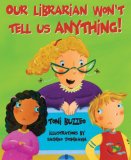


 Also of interest:
Also of interest:Fun links!
Newbery authors share their thoughts! (including Nancy Willard's 1982 sketch, pictured at the top of this post!)
Author Shannon Hale's Newbery phone call play-by-play!
Cool Mock Awards:
Allen County Library
BCCLS Mock Awards
Wake County Public Library
West Chester Library Association
And a very fabulous mock round-up at the Year of Reading blogspot!
Links are provided for informational use. Don't forget to support your local bookseller.

